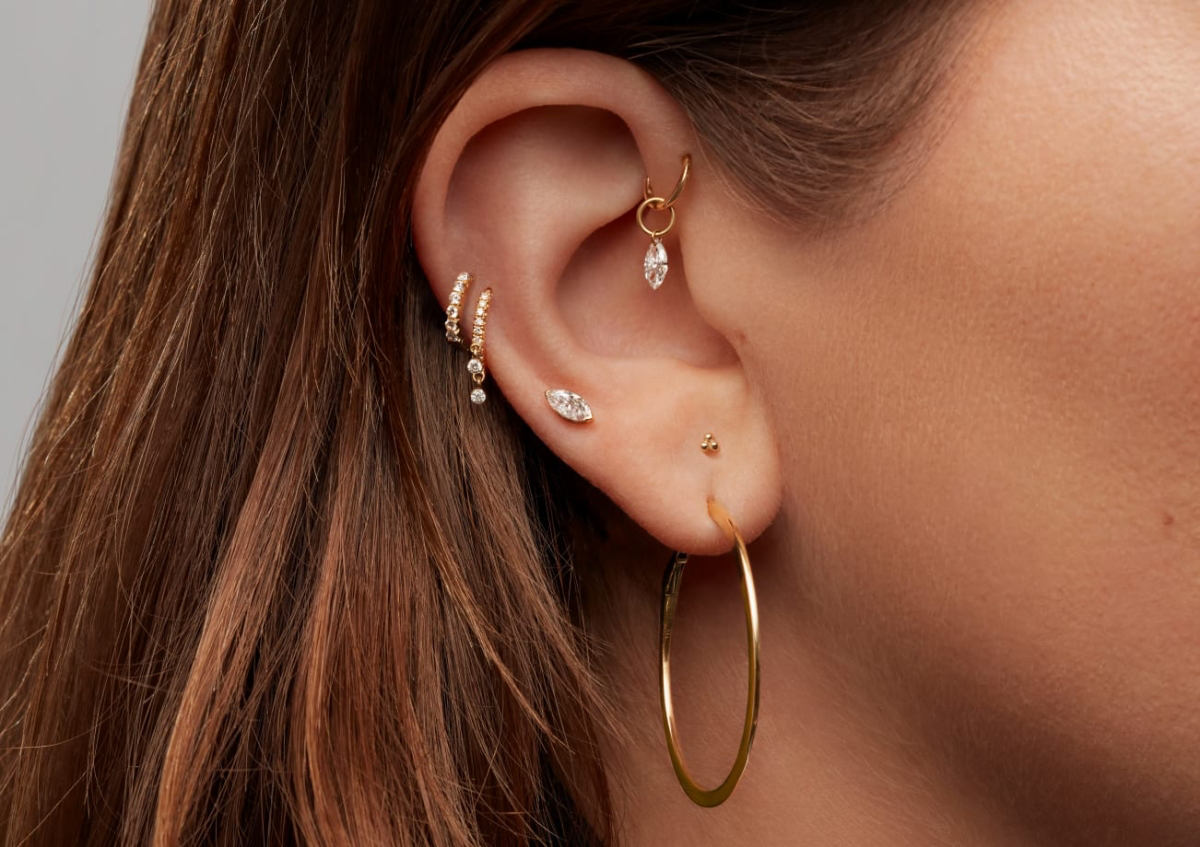Exploring The Forward Helix Piercing: All You Need to Know
Forward helix piercings are a captivating and trendy way to enhance your overall style while adding a touch of elegance and individuality to your appearance. In this comprehensive guide, we will take a deep dive into the world of forward helix piercings, offering you valuable insights into the various aspects of this stylish piercing option. Whether you’re a seasoned piercing enthusiast or someone considering their first venture into body modification, this article aims to equip you with the knowledge and understanding necessary to make an informed decision regarding forward helix piercings. Let’s dive into the world of the forward helix […]
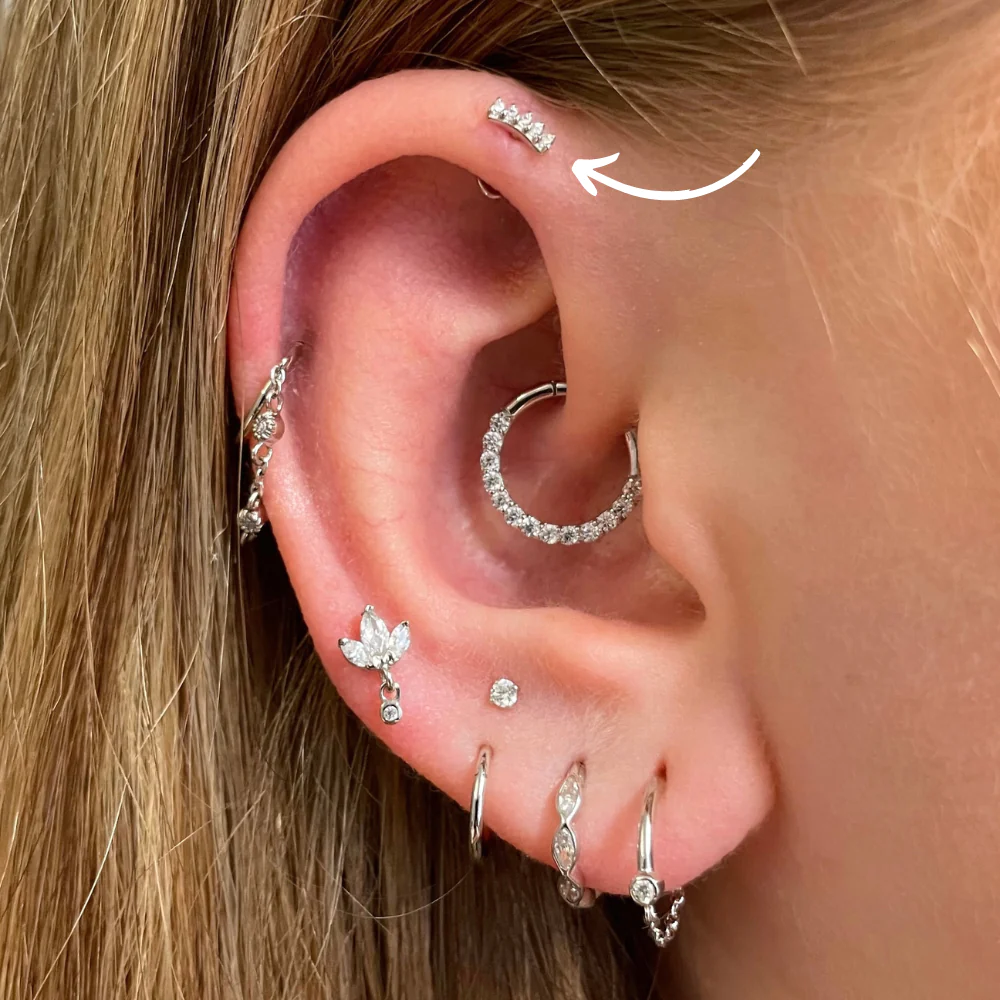
Forward helix piercings are a captivating and trendy way to enhance your overall style while adding a touch of elegance and individuality to your appearance. In this comprehensive guide, we will take a deep dive into the world of forward helix piercings, offering you valuable insights into the various aspects of this stylish piercing option. Whether you’re a seasoned piercing enthusiast or someone considering their first venture into body modification, this article aims to equip you with the knowledge and understanding necessary to make an informed decision regarding forward helix piercings.
Let’s dive into the world of the forward helix piercing

What is a Forward Helix Piercing?
A forward helix piercing involves puncturing the cartilage at the front of your ear, near the head’s apex. It’s a unique and eye-catching location that allows for various jewelry choices, making it a popular choice among those seeking something distinct.
A forward helix piercing involves puncturing the cartilage near the head’s apex.
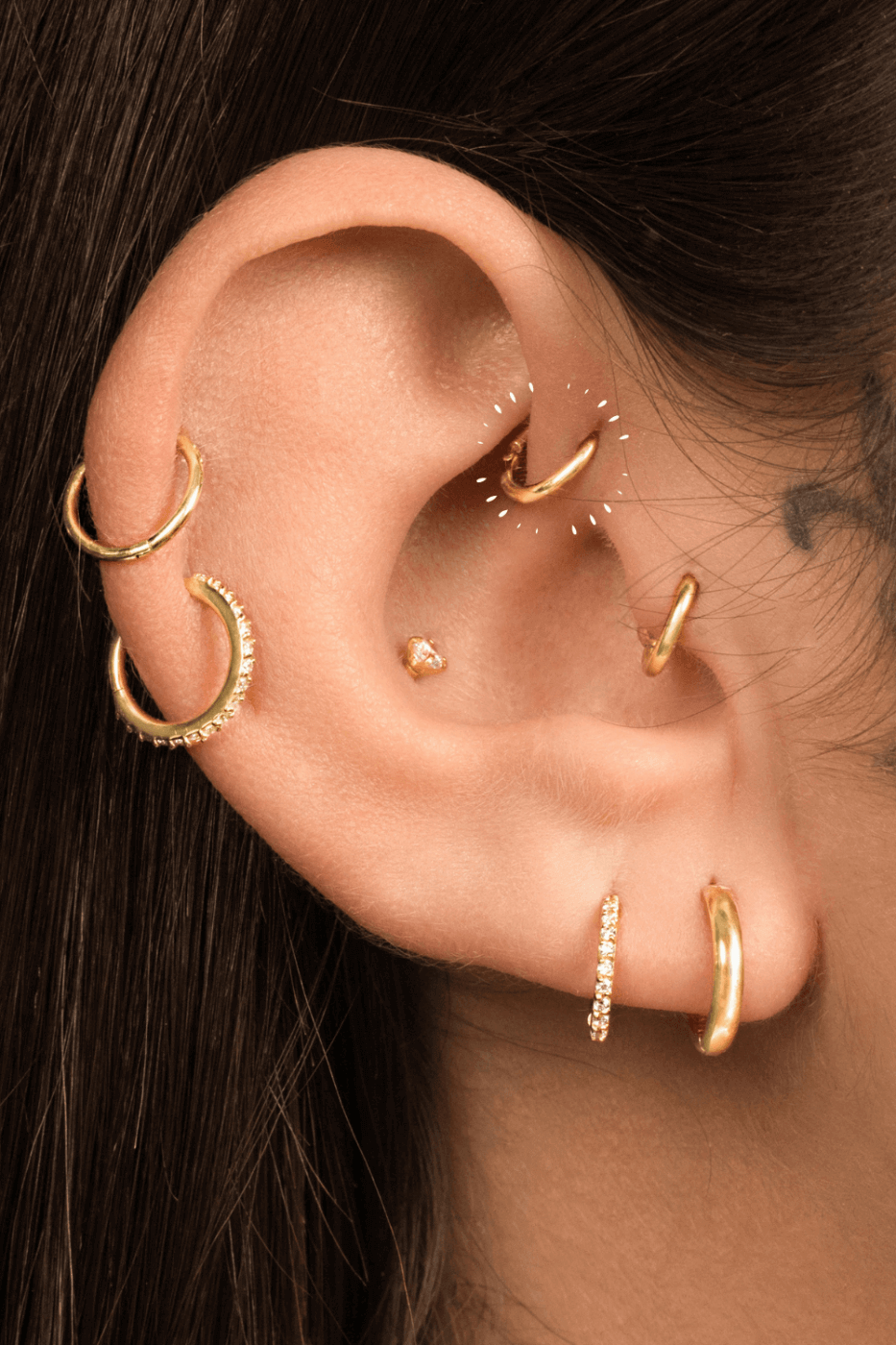
Types of Forward Helix Piercings
Forward helix piercings come in several variations, each offering its charm and appeal. Let’s explore some of the most popular types:
- Single Forward Helix: A single piercing placed at the front of the ear’s upper cartilage.
- Double Forward Helix: Two piercings in close proximity, creating a balanced and stylish look.
- Triple Forward Helix: Three piercings lined up along the upper ear cartilage, offering a unique and intricate appearance.
The most popular type is the single forward helix
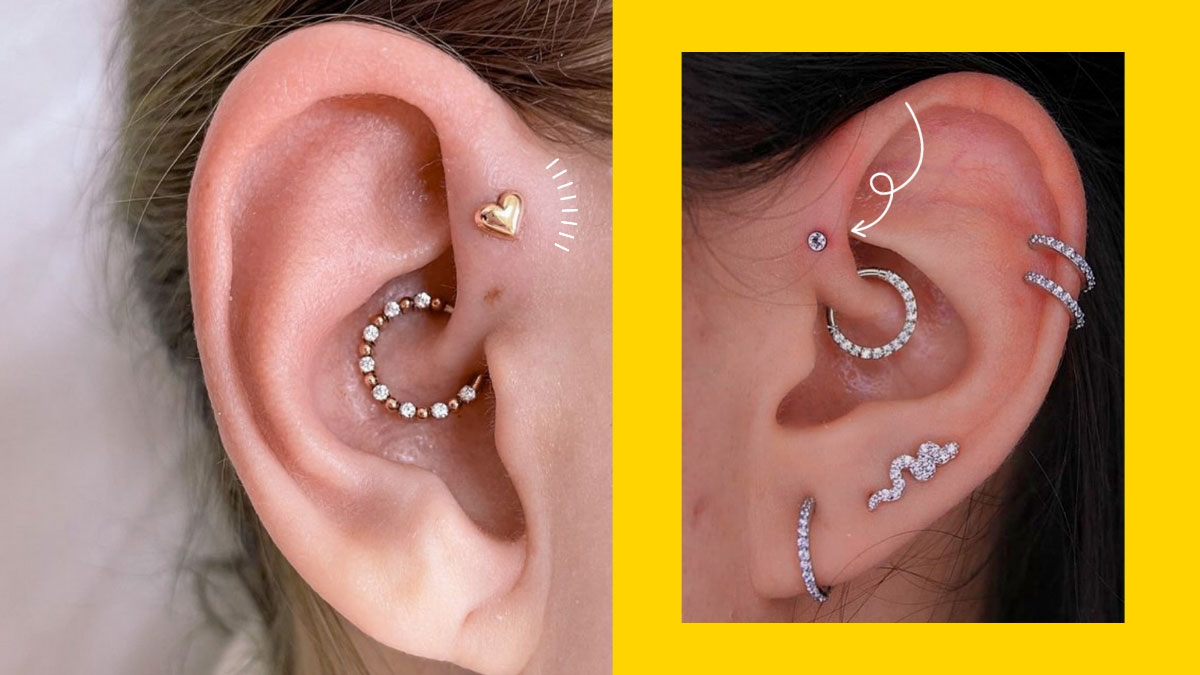
How Much Does It Usually Cost?
The cost of a forward helix piercing can vary depending on several factors, including your location, the piercing studio’s reputation, and the type of jewelry you choose. On average, you can expect to pay anywhere from $30 to $90 for a single forward helix piercing. Double or triple forward helix piercings may cost more due to the complexity and additional jewelry.
You can expect to pay anywhere from $30 to $90

Who Should Get a Forward Helix Piercing?
Forward helix piercings are an excellent choice for individuals looking to add a touch of sophistication and uniqueness to their appearance. Here are some characteristics of people who might consider getting a forward helix piercing:
- Creative Style Enthusiasts: If you appreciate creative jewelry options and enjoy experimenting with different styles, a forward helix piercing could be an ideal choice. The placement of this piercing allows for a wide range of jewelry options, from elegant studs to delicate hoops and intricate designs.
- Fashion-Forward Individuals: Forward helix piercings can be a stylish and trendy addition to your overall look. They offer a subtle yet eye-catching way to express your fashion-forward personality.
- Commitment to Aftercare: Like all cartilage piercings, forward helix piercings require proper aftercare. If you’re committed to following the recommended aftercare routine, which includes cleaning and avoiding potential irritants, you’re more likely to have a successful piercing experience.
Ear piercings offer a subtle yet eye-catching way to express your personality
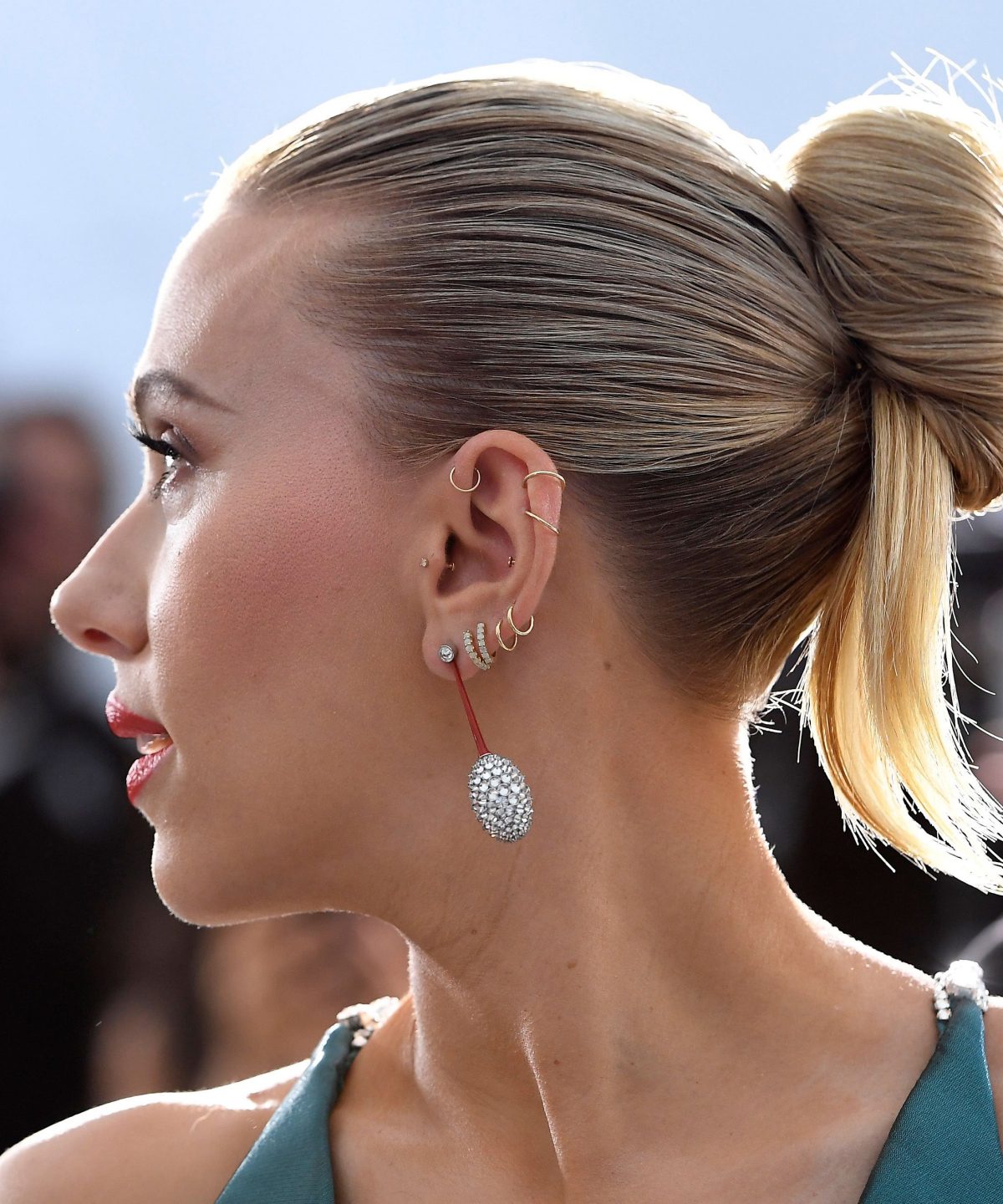
Who Should Avoid It and Why?
While forward helix piercings are stunning and versatile, they may not be suitable for everyone. Here are some considerations for individuals who might want to exercise caution or avoid this piercing:
- Low Pain Tolerance: Piercing pain varies from person to person, but cartilage piercings can be more painful than lobe piercings. If you have a low pain tolerance, you should carefully weigh the pros and cons before getting a forward helix piercing.
- Keloid Prone: Individuals who are prone to keloid scarring, where the scar tissue grows larger than the original wound, should be cautious. Cartilage piercings can sometimes lead to keloid formation, and it’s essential to consult a professional piercer or dermatologist beforehand.
- Ear Cartilage Issues or Sensitivities: If you have any pre-existing ear cartilage issues, such as infections or sensitivities, it’s advisable to consult a professional piercer or healthcare provider before getting a forward helix piercing. They can assess whether the piercing is safe and suitable for your specific condition.
Ultimately, the decision to get a forward helix piercing should be a well-considered one, taking into account your personal style, pain tolerance, commitment to aftercare, and any potential health considerations.
Individuals who are prone to keloid scarring should be cautious

Does a Forward Helix Piercing Hurt?
The pain experienced during a forward helix piercing can vary from person to person. Generally, it’s described as mild to moderate, similar to other cartilage piercings. However, the pain is brief, lasting only a few seconds, making it manageable for most individuals.
The pain of a forward helix piercing can vary from person to person
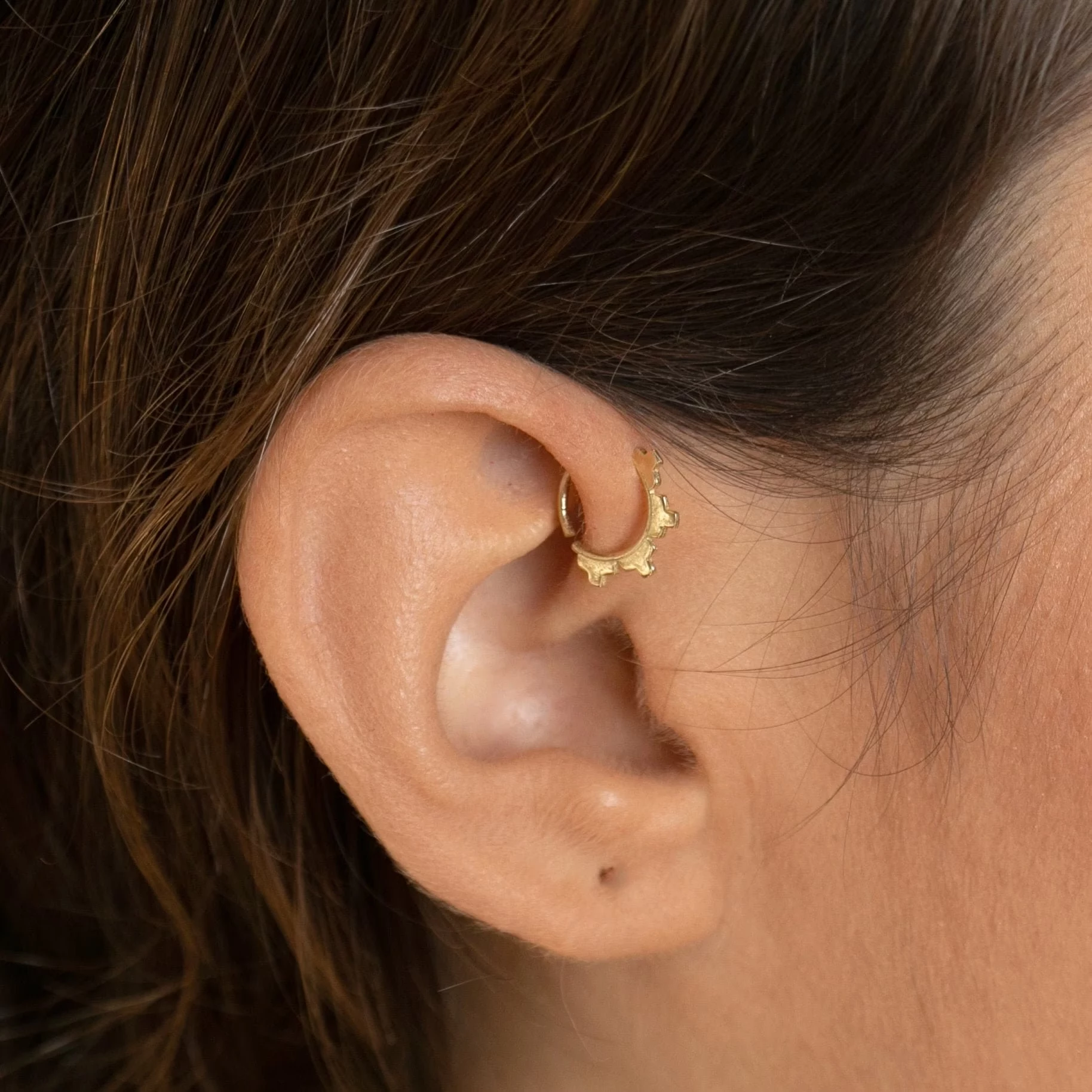
Advantages and Disadvantages of a Forward Helix Piercing
Advantages of a Forward Helix Piercing
- Stylish and Unique: Forward helix piercings are stylish and add a unique element to your appearance. Their placement at the front of the ear cartilage allows for creative jewelry options, making it a trendy choice for those looking to stand out.
- Versatile Jewelry: One of the significant advantages of forward helix piercings is the versatility in jewelry selection. You can choose from a variety of jewelry styles, including studs, hoops, rings, and barbells, allowing you to express your style and switch up your look effortlessly.
- Subtle Elegance: These piercings offer a touch of elegance without being overly conspicuous. Whether you opt for a single forward helix piercing or a cluster of them, they can be both understated and eye-catching.
- Customizable Placement: The forward helix area offers customization options. You can choose the exact placement of your piercings, allowing you to create a personalized and balanced look based on your ear’s anatomy and your aesthetic preferences.
You can create a personalized and balanced look based on your aesthetic preferences
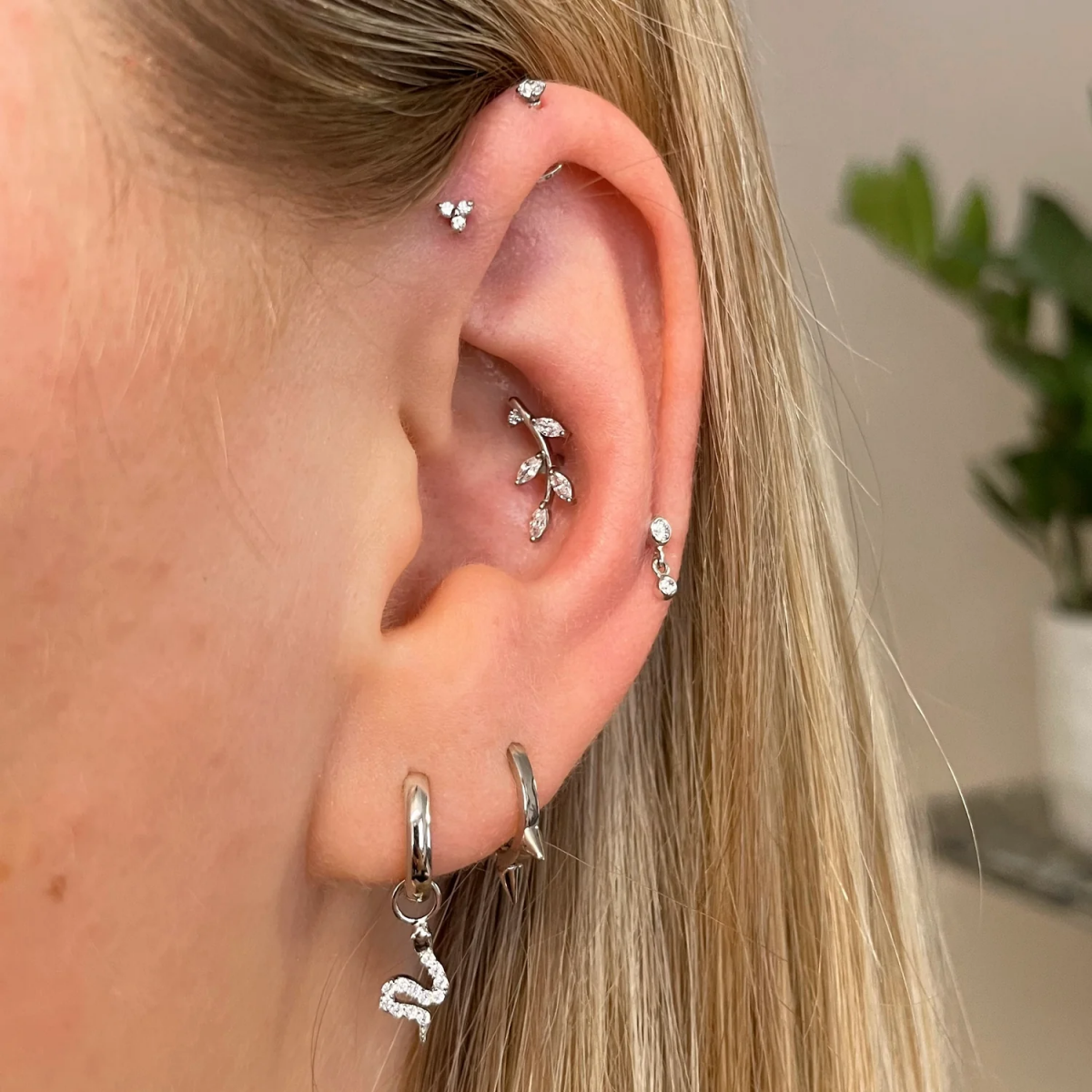
Disadvantages of a Forward Helix Piercing:
- Potential for Longer Healing Times: Cartilage piercings, including forward helix piercings, typically have longer healing times compared to lobe piercings. While individual healing varies, it’s not uncommon for these piercings to take several months to a year to fully heal. Proper aftercare and patience are essential.
- Piercing Pain: Cartilage piercings can be more painful than lobe piercings due to the denser tissue. The pain experienced during the piercing process and the initial days of healing can be uncomfortable for some individuals.
- Risk of Complications: As with any piercing, there is a risk of complications, including infection, irritation, and keloid scarring. It’s crucial to follow proper aftercare guidelines to minimize these risks.
- Commitment to Aftercare: Forward helix piercings require diligent aftercare, including cleaning and avoiding potential irritants such as harsh hair products and touching the piercing unnecessarily. If you’re not willing to commit to the aftercare routine, these piercings may not be suitable for you.
- Potential for Jewelry Interference: Depending on the exact placement and anatomy of your forward helix, there is a possibility that the jewelry may interfere with headphones or earbuds, causing discomfort or difficulty in using them.
Forward helix piercings require diligent aftercare
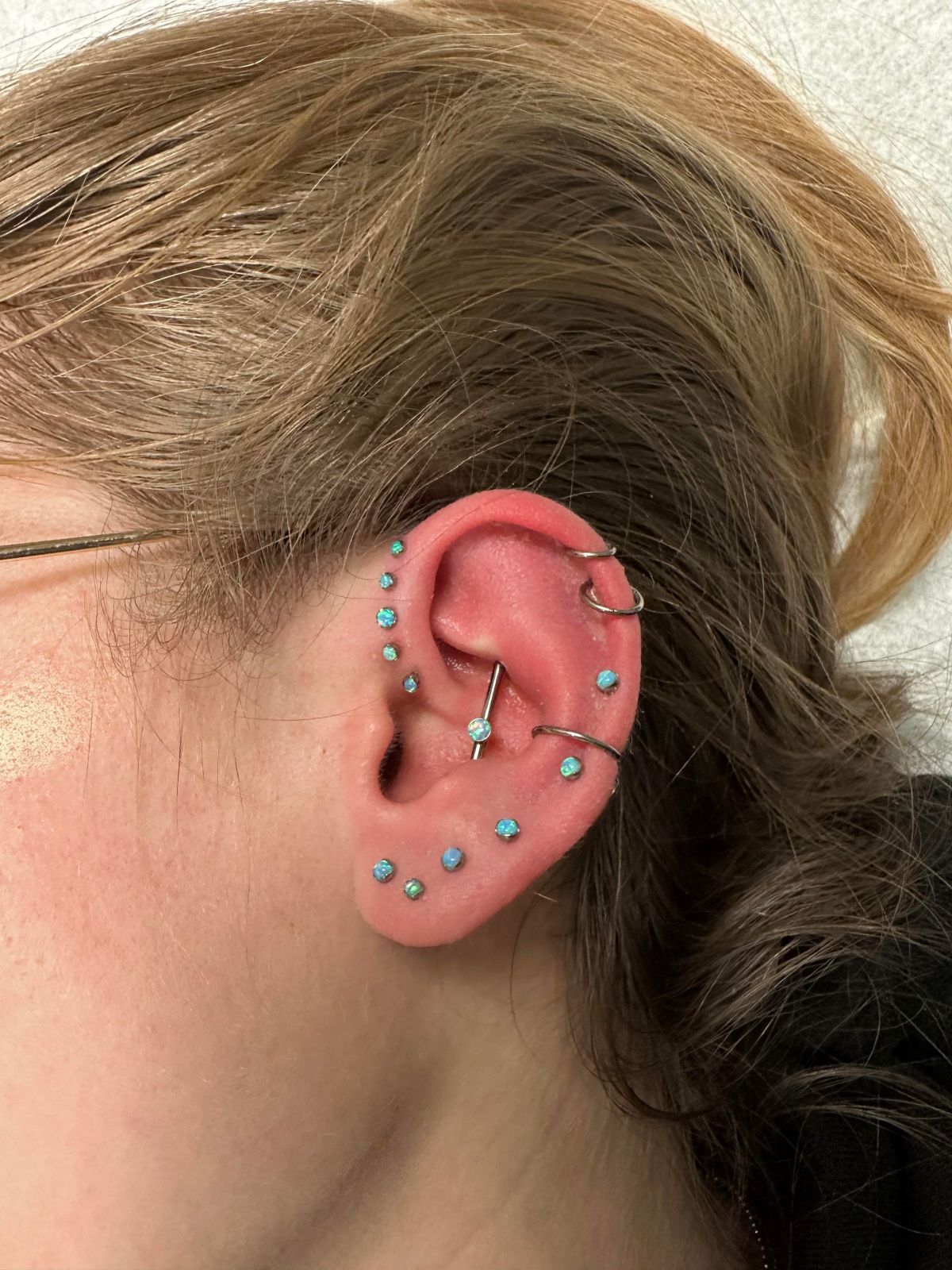
In summary, forward helix piercings offer a stylish and customizable option for those looking to enhance their appearance. However, potential disadvantages include longer healing times, piercing pain, the risk of complications, the need for diligent aftercare, and potential interference with certain accessories. It’s essential to weigh these factors carefully before deciding if a forward helix piercing is the right choice for you.
How Long Does a Forward Helix Piercing Take to Heal?
The healing time for a forward helix piercing typically ranges from 3 to 6 months or longer. Patience and diligent aftercare are essential to ensure a smooth and comfortable healing process.
What Material and What Type of Jewelry is Best?
When it comes to adorning your forward helix piercing, the choice of jewelry isn’t just a matter of style; it’s also essential for your comfort and overall well-being. Let’s delve into the world of materials and jewelry types that work best for your forward helix piercing, ensuring that every choice you make enhances your style while guaranteeing a comfortable fit.
Materials
The material of your forward helix jewelry plays a pivotal role in how your piercing heals and how comfortable it feels. Here are some top-notch materials to consider:
- Surgical Stainless Steel: Renowned for its biocompatibility and hypoallergenic properties, surgical stainless steel is an excellent choice for those with sensitive skin. It’s durable, corrosion-resistant, and widely available in various styles.
- Titanium: If you’re concerned about allergies or skin sensitivities, titanium is a fantastic option. Not only is it lightweight, but it’s also resistant to corrosion and tarnishing. Plus, it comes in a spectrum of colors for a personalized touch.
- Niobium: Often overlooked but equally impressive, niobium boasts hypoallergenic qualities and versatility. It’s an ideal choice for those who prefer unique, handcrafted pieces, as niobium can be easily anodized to achieve various colors.
Jewelry Types to Explore
Your forward helix piercing opens up a world of jewelry options, allowing you to curate a style that reflects your personality. Here are some popular jewelry types to consider:
- Studs: Classic and versatile, studs come in various designs, from simple and elegant to elaborate and decorative. Choose a stud that resonates with your aesthetic preferences, whether it’s a sparkling gem or a minimalist ball.
- Hoops: Embrace a touch of boho-chic with hoops that encircle your forward helix. These come in different diameters and styles, such as seamless rings or hinged clickers, adding a bold statement to your look.
- Barbells: Featuring a straight bar with beads on each end, barbells offer an understated yet stylish choice. Opt for bead designs that match your vibe, from plain balls to intricate designs.
- Labrets: Labrets are simple and elegant, featuring a flat backplate and a decorative front. These are excellent choices for those who prioritize comfort and minimalism.
These are the main materials and types of jewerly to consider

How to Take Care of a Forward Helix Piercing
Proper aftercare is paramount for the successful healing of your forward helix piercing. Here are some essential tips to ensure a smooth healing process:
- Clean Gently: Clean your piercing twice a day using a saline solution or a saline wound wash. Avoid harsh chemicals or excessive cleaning, as this can irritate the piercing.
- Hands Off: Avoid touching your piercing with dirty hands to prevent infection. Only handle it when necessary, and make sure your hands are clean.
- Avoid Sleeping on it: Try to sleep on the opposite side to prevent irritation or pressure on the piercing.
- Stay Hydrated and Eat Well: A balanced diet and staying hydrated can help promote faster healing.
- Avoid Swimming: Avoid swimming in pools, hot tubs, or natural bodies of water until your piercing is fully healed to prevent infection.
Make sure to follow these tips to protect your piercing
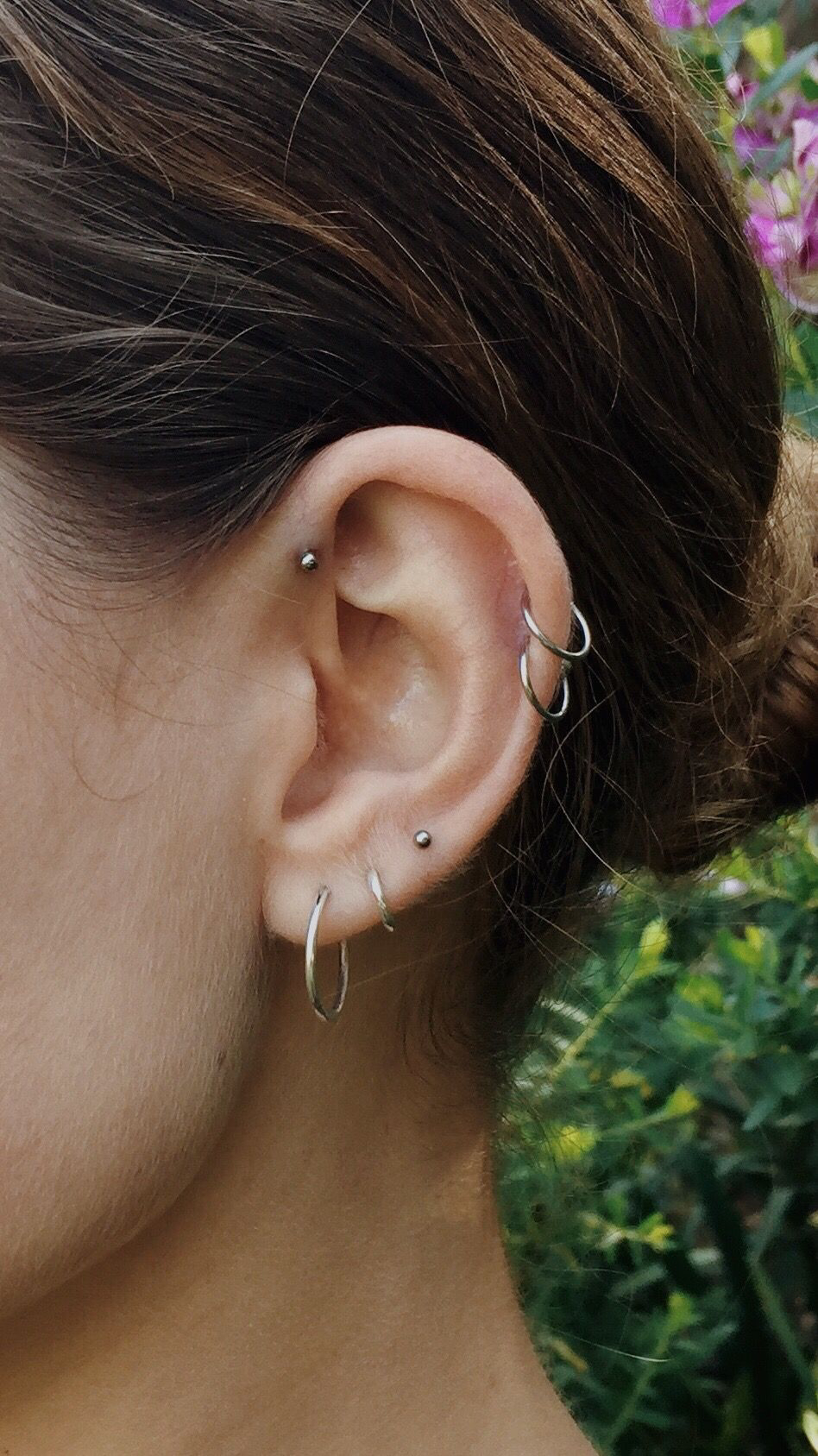
When and How to Change Out a Forward Helix Piercing
Changing your jewelry is an exciting part of the piercing journey. Here are some tips for when and how to safely change your forward helix piercing jewelry:
- Wait for Full Healing: It’s essential to wait until your piercing is fully healed before changing jewelry. This usually takes at least 3 to 6 months.
- Clean Hands and Jewelry: Before changing your jewelry, make sure your hands and the new jewelry are clean to prevent contamination.
- Be Gentle: Remove the existing jewelry carefully and insert the new piece gently to avoid discomfort or injury.
- Seek Professional Help: If you’re unsure or uncomfortable changing the jewelry yourself, visit a professional piercer who can assist you.
It is best to visit a professional piercer who can change the jewelry for you

Conclusion
In conclusion, forward helix piercings are a fantastic way to express your style and individuality. Whether you opt for a single, double, or triple forward helix, these piercings offer a unique and captivating look. By following proper aftercare guidelines and choosing suitable jewelry, you can enjoy your forward helix piercing for years to come.
Now you are prepared to get a forward helix piercing!
